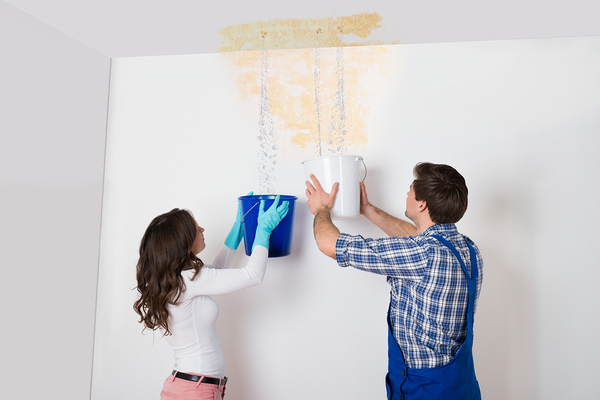Identify the Six Most Leak Triggers Within Your House
Identify the Six Most Leak Triggers Within Your House
Blog Article
Everyone has their own individual perception when it comes to How to detect water leaks in your home.

Leakages not just trigger waste of water however can also create unneeded damage to your home and advertise unwanted organic development. Water leakages might go undetected because many of the pipework in our house is concealed. By looking as well as recognizing for everyday scenarios that cause leakages, you can shield your home from future leakages and also unnecessary damage. Today, we will take a look at six leakage causes that might be causing your pipes to trickle.
Encroaching roots
A lot of water leaks start outside the home rather than inside it. You may observe wet spots or sinkholes in your lawn, and that might mean that tree origins are attacking water lines creating water to leak out.
Corroded water supply
This may be the cause of discoloration or bending on your water pipelines. If our plumbing system is old, consider changing the pipes given that they are at a higher threat of corrosion than the more recent models.
Faulty Pipeline Joints
The factor at which your pipelines attach is often the weakest link in the waterline. Pipe joints can weaken with time, resulting in water leaks. The majority of pipe joints are not quickly visible. If you have loud pipelines that make ticking or banging sounds, specifically when the warm water is turned on, your pipeline joints are probably under a great deal of stress. It is advisable to have your plumber inspect your system once a year.
Instant temperature adjustments.
Severe temperature level modifications in our pipelines can create them to increase and contract suddenly. This growth as well as tightening might trigger splits in the pipelines, specifically if the temperature level are listed below cold.
Poor Water Connectors
At times, a leakage can be caused by loosened tubes and also pipes that provide your appliances. In situation of a water links leak, you might notice water running directly from the supply line or pools around your appliances.
Blocked Drains
Obstructed drains pipes might be irritating and also inconveniencing, but they can in some cases wind up creating an overflow leading to burst pipes. Keep eliminating any type of products that might drop your drains pipes that can obstruct them to stay clear of such inconveniences.
All the above are reasons for leakages but not all water leaks result from plumbing leakages; some leakages may come from roofing system leaks. All leaks need to be fixed promptly to prevent water damage.
Leaks not just trigger waste of water but can also create unnecessary damages to your house as well as advertise unwanted natural development. By understanding and also looking for daily situations that trigger leakages, you can shield your residence from future leakages and unneeded damages. Today, we will look at six leak triggers that might be triggering your pipes to trickle.
At times, a leak can be created by loose hoses and also pipelines that supply your home appliances. In instance of a water connections leak, you may observe water running directly from the supply line or pools around your devices.
How To Check For Water Leak In Your Home
How To Check for Leaks
The average household's leaks can account for nearly 10,000 gallons of water wasted every year and ten percent of homes have leaks that waste 90 gallons or more per day. Common types of leaks found in the home are worn toilet flappers, dripping faucets, and other leaking valves. These types of leaks are often easy to fix, requiring only a few tools and hardware that can pay for themselves in water savings. Fixing easily corrected household water leaks can save homeowners about 10 percent on their water bills.
To check for leaks in your home, you first need to determine whether you're wasting water and then identify the source of the leak. Here are some tips for finding leaks:
Take a look at your water usage during a colder month, such as January or February. If a family of four exceeds 12,000 gallons per month, there are serious leaks.
Check your water meter before and after a two-hour period when no water is being used. If the meter changes at all, you probably have a leak.
Identify toilet leaks by placing a drop of food coloring in the toilet tank. If any color shows up in the bowl after 10 minutes, you have a leak. (Be sure to flush immediately after the experiment to avoid staining the tank.)
Examine faucet gaskets and pipe fittings for any water on the outside of the pipe to check for surface leaks.
Undetected water leaks can happen without the home or business owner even realizing. If you suspect a water leak, but not able to find the source. It is time to contact a professional water leak detection service, The Leak Doctor.
How To Find a Water Leak In Your Home
https://www.leakdoctor.com/blog/How-To-Check-For-Water-Leak-In-Your-Home_AE197.html

Do you really like reading up on Common Water Leaks In House? Put a short review directly below. We will be interested to see your ideas about this blog. Hoping that you come back again before long. Sharing is nice. Who knows, you will be doing someone a favor. Thank you for your time. Visit again soon.
Quick relief? Dial! Report this page